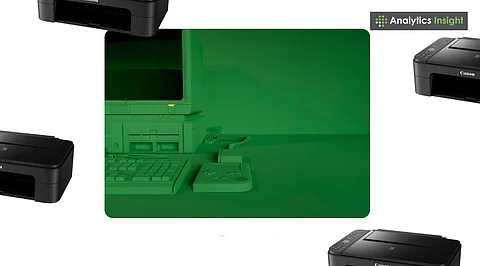Business
SMEs Face Cyber Risks from Neglected Wireless Devices

Concerns are rising about the cybersecurity vulnerabilities posed by wireless devices in small and medium-sized enterprises (SMEs). A recent report from the International Data Corporation (IDC) indicates that nearly 37% of SMEs experienced security incidents linked to connected devices that were overlooked in their cybersecurity strategies. As businesses increasingly rely on wireless printers, scanners, and routers, these devices can serve as gateways for cyber threats.
The Hidden Risks of Office Devices
Many companies tend to underestimate the risks associated with wireless devices. Printers and scanners, often viewed as innocuous, can create significant vulnerabilities if they remain connected to the network without proper monitoring. Unlike computers, which are regularly scrutinized for unusual activity, printers are frequently neglected. According to HP’s 2025 Print Security Report, a staggering 52% of printers in SMEs had never received firmware updates, leaving them susceptible to known exploits.
These devices can act as silent observers, logging sensitive information or forwarding documents without detection. As businesses adapt to remote work and a bring-your-own-device culture, the proliferation of wireless peripherals increases the risk. Default settings are often unchanged, and data encryption may be weak or outdated, exposing sensitive information during transmission.
Strategies for Enhanced Security
To address these vulnerabilities, SMEs must shift their approach to cybersecurity, focusing on proactive measures. Regular firmware updates are crucial. Manufacturers frequently release updates to fix bugs and patch vulnerabilities, and SMEs should implement a system to ensure all connected devices receive these updates, ideally through automation.
It is also advisable to disable unused features on wireless devices. Many printers come equipped with functionalities such as remote access and File Transfer Protocol (FTP) sharing, which can serve as entry points for cyber attackers if not properly managed. Changing default credentials is essential as well. Common usernames like ‘admin’ and passwords such as ‘1234’ should be replaced immediately to enhance security.
Maintaining a comprehensive inventory of connected devices is another critical step. From Wi-Fi cameras to mobile printers, every device can be a potential vulnerability. Furthermore, segmenting networks can significantly improve security. By keeping Internet of Things (IoT) and printing devices on a separate Virtual Local Area Network (VLAN), SMEs can limit access to critical systems even if one device is compromised.
Educating employees is equally vital. Training staff to recognize the cybersecurity risks associated with wireless devices can significantly reduce exposure to threats. As the adoption of smart devices continues to rise, SMEs can no longer afford to overlook these “silent risk carriers.”
In conclusion, as cybersecurity threats evolve, SMEs must adapt their practices to safeguard against the vulnerabilities posed by everyday devices. By implementing specific safety measures and fostering a culture of awareness, businesses can reduce their risk and maintain the trust of their clients. It is essential to remember that while convenience is important, it should not come at the expense of security.
-

 Lifestyle3 months ago
Lifestyle3 months agoLibraries Challenge Rising E-Book Costs Amid Growing Demand
-

 Sports3 months ago
Sports3 months agoTyreek Hill Responds to Tua Tagovailoa’s Comments on Team Dynamics
-

 Sports3 months ago
Sports3 months agoLiverpool Secures Agreement to Sign Young Striker Will Wright
-

 Lifestyle3 months ago
Lifestyle3 months agoSave Your Split Tomatoes: Expert Tips for Gardeners
-

 Lifestyle3 months ago
Lifestyle3 months agoPrincess Beatrice’s Daughter Athena Joins Siblings at London Parade
-

 World3 months ago
World3 months agoWinter Storms Lash New South Wales with Snow, Flood Risks
-

 Science3 months ago
Science3 months agoTrump Administration Moves to Repeal Key Climate Regulation
-

 Science2 months ago
Science2 months agoSan Francisco Hosts Unique Contest to Identify “Performative Males”
-

 Business3 months ago
Business3 months agoSoFi Technologies Shares Slip 2% Following Insider Stock Sale
-

 Science3 months ago
Science3 months agoNew Tool Reveals Link Between Horse Coat Condition and Parasites
-

 Sports3 months ago
Sports3 months agoElon Musk Sculpture Travels From Utah to Yosemite National Park
-

 Science3 months ago
Science3 months agoNew Study Confirms Humans Transported Stonehenge Bluestones









